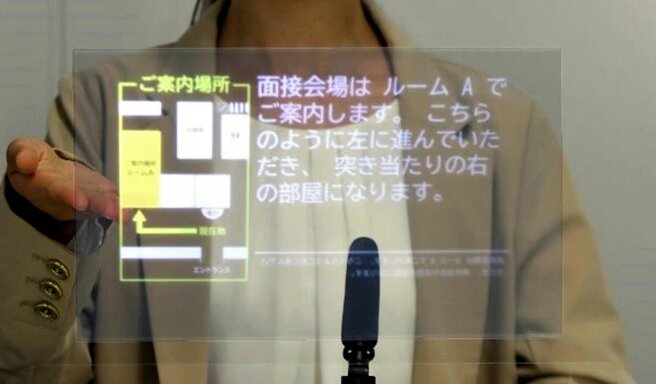
Source: Shutterstock.
Speaking easy: is realtime translation ready?
• Realtime translation has long been a science-fiction dream.
• Now, although it’s not perfect, there are options for relatively realtime translation.
• Of those on the market, Cotopat is worth watching.
The possibility of realtime translation has long been a border-crossing daydream. We all know the feeling: sitting down to order in a nice restaurant somewhere abroad – maybe it’s the last night of a holiday, or the evening after an international business meeting – watching the waiter struggle to decipher what it is you’re trying to order.
The days of phrasebooks feel very long ago. Sure, with the benefit of the internet maybe you’ve looked up what the dish you want is called, even listened to a robotic pronunciation guide, but in the moment, it doesn’t seem to be cutting it.
Oh, if it were only as easy as turning on subtitles!
Google Translate, more a less a staple of the jet setter’s catalogue, wasn’t launched until 2006. By now a mobile app, it began the revolution of realtime translation. Be it dictated, typed out or scanned from a photograph of text, Google Translate… translates. If you’re nifty, you could almost believe it’s happening in realtime.
It’s famously slightly inaccurate, or perhaps too literal, but for the most part, everyone seems pretty content with where the tech stands. But what if it could be better?
The 1960s were when the tech first got involved – the SYSTRAN company was founded in 1968. By 1997 the Babylon translator, offering one of the earliest translation programs for Windows desktop, was made available. It provided foreign language dictionaries and basic translation services.
After Google’s translation service, you’d be forgiven for thinking the world of translation technology had slowed down. But you’d be wrong.
First introduced in 2021, but officially launched in Japan on August 17 2023, Kyocera’s Cotopat system might be the next step in realtime translation. It comprises of a transparent screen that converts speech into text in realtime, displaying bidirectional translation between two speakers.

Phoebe’s realtime human translator didn’t work out…
Cotopat will initially benefit government officials, diplomats, and high-level negotiators, but as the price drops it will no doubt be useful for tourists and those with hearing impairments. It’ll certainly help with bi-lingual love affairs. “I said ‘Kiss me, you fool!’ not ‘Hit me with a dehydrated wombat-dropping!'”…
How does Cotopat work?
Developed and launched by electronics manufacturer Kyocera Document Solutions, the tech offers a user-friendly display system that’s been extensively tested by Kyocera in real-world scenarios.
It recognizes spoken words in real-time and displays the translated text and pertinent visuals: live subtitles. Currently, it can translate to and from Japanese in five languages:
- Simplified Chinese
- Traditional Chinese
- English
- Portuguese
- Korean
- Vietnamese
Cotopat is designed to recognize the voice of each speaker and can identify synonyms, homophones and word boundaries – things that Google Translate can be a bit rough on. Like almost all emerging technologies at the momemt, it uses a pre-trained AI to translate spoken words.

Source: Kyocera
The system can be pre-programmed to recognize specific terminology, enhancing accuracy in specialist situations such as medicine, law, engineering, and utilities.
The screen is transparent, which means people in conversation can see each other’s faces, leading to a more natural experience than the two parties speaking into and reading from separate smartphone apps.
The transparent screen measures 12” x 7” (30cm x 18cm). It can be attached to any hard surface and the rendered text is large enough to be read easily. Cotopat can pull in relevant imagery too, like maps or diagrams, as the conversation develops.

Source: Kyocera
Cotopat has so far undergone successful trials in 17 facilities in Japan, including the Yokohama City Naka Ward Office and Doshisha University. Preliminary tests showed its accuracy an impressive 96%. Google Translate is between 55%-94%.
Similar apps for realtime translation
Although Cotopat is attracting a buzz, it’s not the only live translation service out there. Along the same theme are several variations on app stores, each with varying use cases and specializations. Late summer holiday booked? Here are some of the options out there:
- Languageio – “Automatic translation software for live, text-based conversational channels.”
- Boostlingo – Allows users to translate “Anytime, anywhere, in any language.”
- Kudo – Offers live webinar translations with over “200 spoken and sign languages.”
- Stenomatic – Available in over 70 languages, Stenomatic offers “live translation and interpretation technology.”
- ModernMT – This “learns from linguists’ corrections in real time” and “improves from corrections and adapts to the context of the document. Like a human.”
Maybe closest to Cotopat in the mainstream, Google’s Live Translate is available on its latest Pixel devices, starting with the Pixel 6 phone.
Although Google Translate’s reputation might make users dubious as to how comparable this option is to Cotopat, Live Translate is more than a reincarnation of the Google Translate.
Its features and functionalities allow users to translate language in realtime – one of the reasons it’s exclusive to Pixel devices is that it uses Google’s Tensor chip, designed for the parallel processing needed for machine learning.

The best available option right now?
Translations show during phonecalls, texts and video calls, allowing relatively seamless cross-cultural conversation – but without the intimacy or immediacy that Cotopat advertises.
Learning a language is perhaps more likely to deliver long-lasting relationships across borders, but today’s technology is definitely helpful in a pinch.
Although not yet wholly practical – in terms of cost, and the fact that it’s a big transparent screen to squeeze into your carry-on – Cotopat is one of the most advanced realtime translation tools out there today.
Original report by TechHQ.
Simultaneous translation – useful close to home and…very far away indeed.
READ MORE
- Safer Automation: How Sophic and Firmus Succeeded in Malaysia with MDEC’s Support
- Privilege granted, not gained: Intelligent authorization for enhanced infrastructure productivity
- Low-Code produces the Proof-of-Possibilities
- New Wearables Enable Staff to Work Faster and Safer
- Experts weigh in on Oracle’s departure from adland






